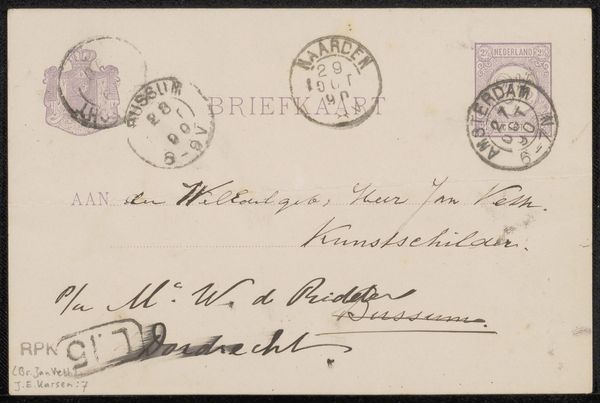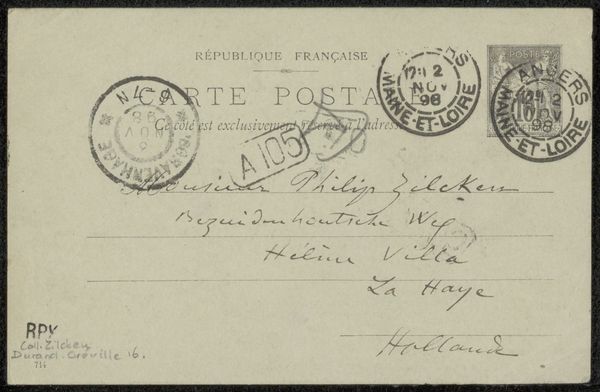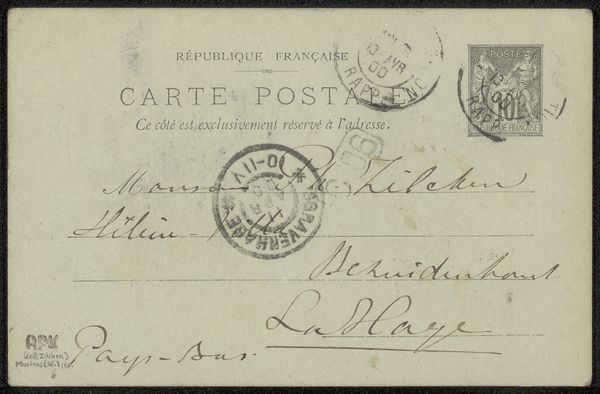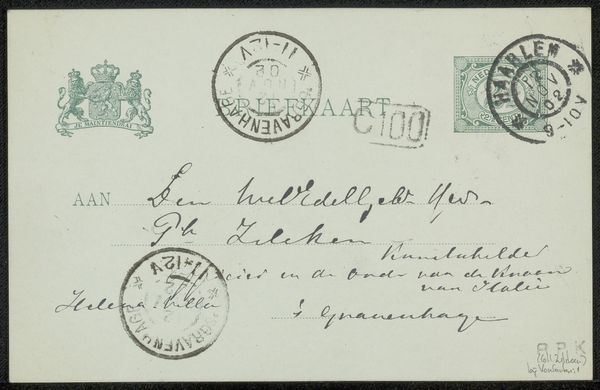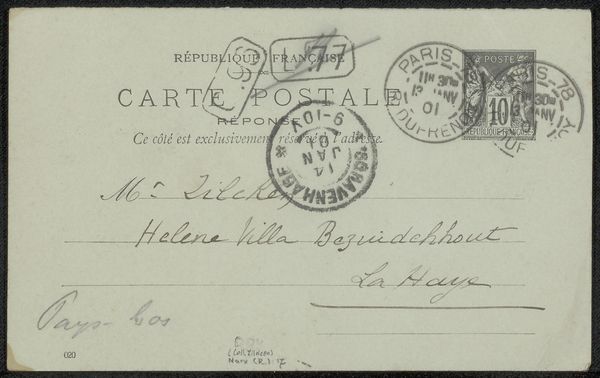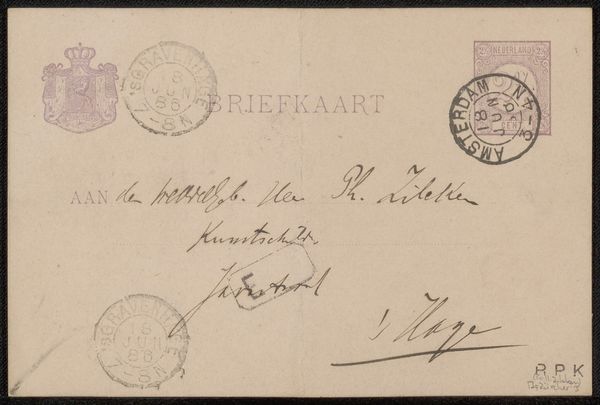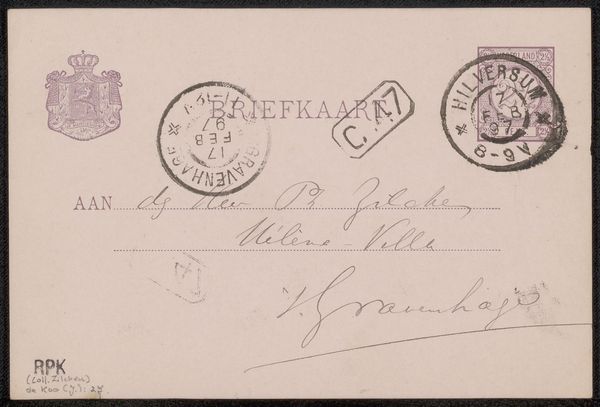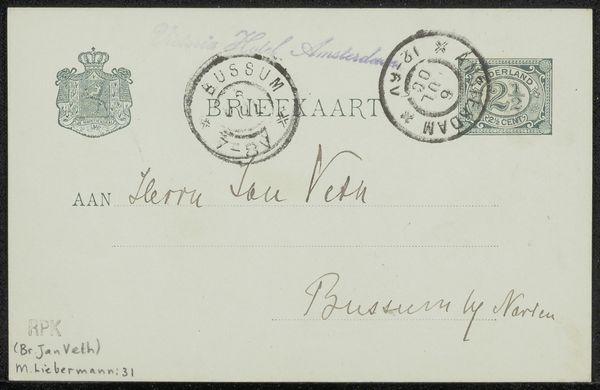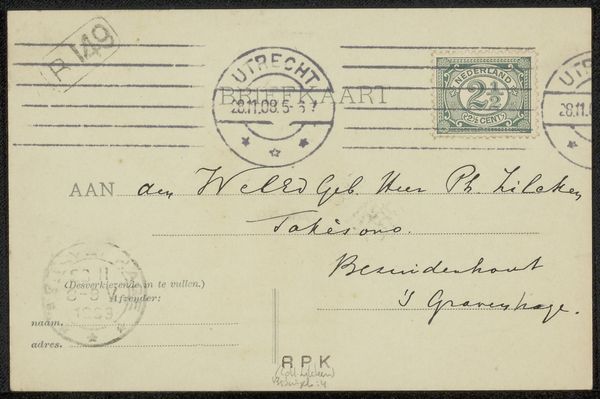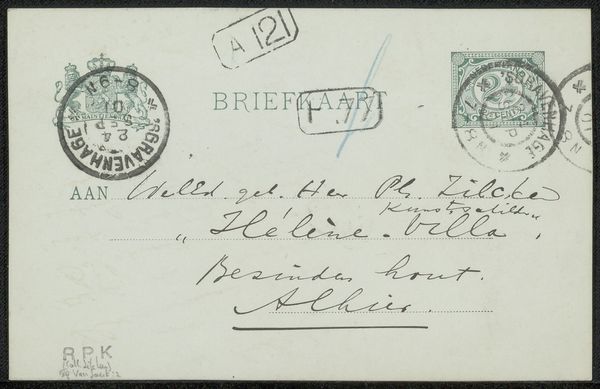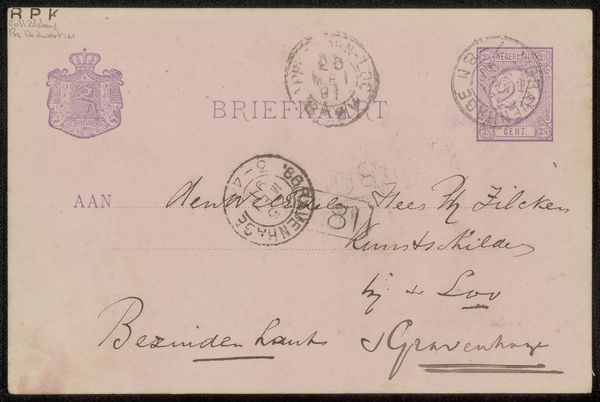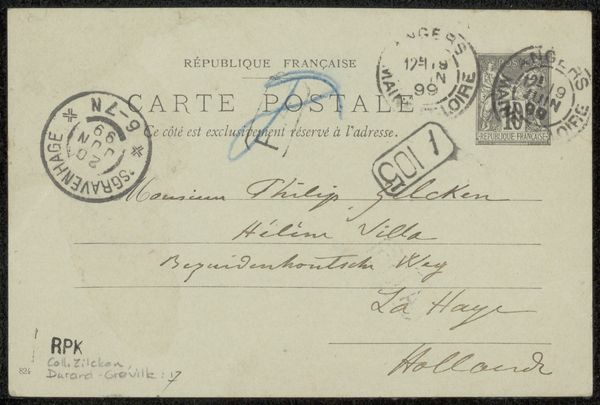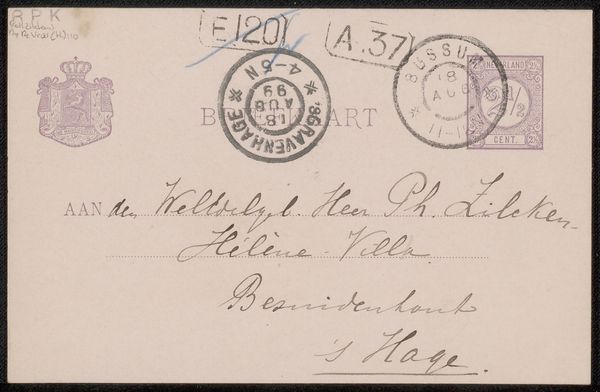
Copyright: Rijks Museum: Open Domain
Editor: This is a postcard titled "Briefkaart aan Philip Zilcken" dating from before 1914. It appears to be a drawing on paper. It's fascinating to see something so ephemeral preserved. What meaning do you find in this particular piece? Curator: I see layers of meaning embedded within this simple artifact. The stamps, the postal marks, the handwriting, and even the paper itself serve as potent symbols. Notice the French stamps—icons of national identity—yet the card is addressed to someone in The Hague, Netherlands. This evokes ideas of correspondence, connection across borders, and the human desire to reach out. What narratives do these international mail routes trigger for you? Editor: It makes me think about the exchange of ideas and art between different countries during that period, before the First World War. Were postcards common artistic tools for sharing work or just personal notes? Curator: Exactly! Postcards were not just for mundane messages. For artists, they were affordable tools of communication, mini-manifestos, or a discreet method to seek patrons. The handwritten note identifying Philip Zilcken as an "artiste peintre" suggests artistic connections, creating a network in the early 20th-century art world. The image of a messenger embedded into the stamps feels really deliberate, doesn't it? Editor: Definitely, it emphasizes the action of delivering ideas. So, what do we take away from it as a whole? Curator: It invites us to contemplate the silent stories behind objects and explore how symbols carry emotional and historical meaning. Also, to be alert to subtle cultural signifiers embedded in artwork. Editor: That is very insightful. Thank you for expanding the picture I had in mind.
Comments
No comments
Be the first to comment and join the conversation on the ultimate creative platform.
